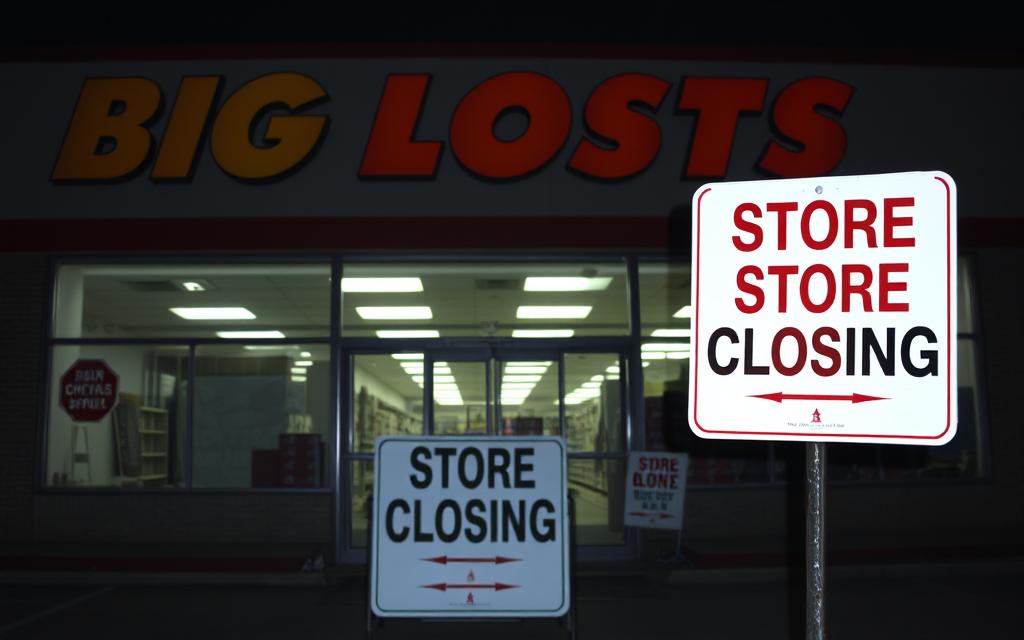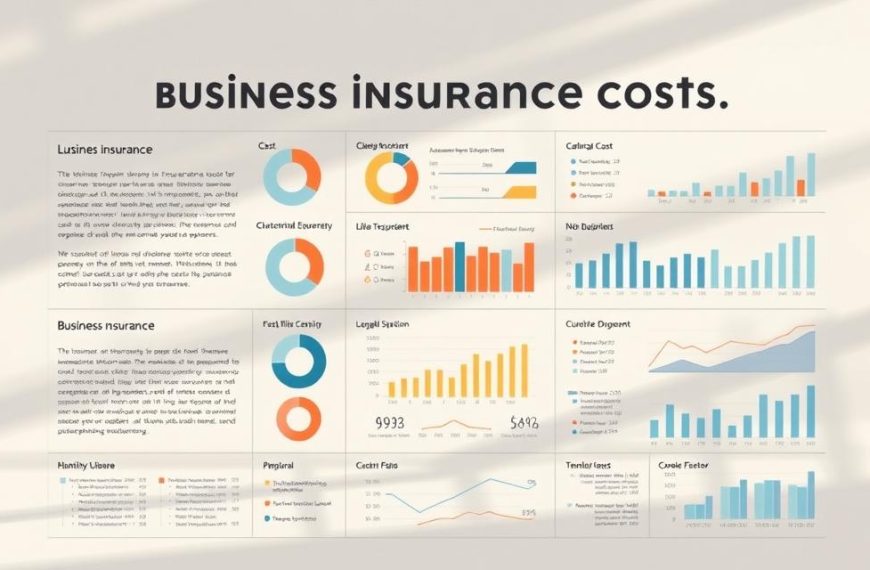The future of a well-known American discount retailer has become uncertain following months of financial strain. In December 2024, the firm confirmed plans to shutter its remaining stores, marking a potential end to its 57-year retail history. This decision comes three months after filing for Chapter 11 bankruptcy protection, a move signalling severe challenges for the company.
Over 400 locations closed their doors earlier this year, drastically reducing the retailer’s presence nationwide. Chief Executive Bruce Thorn acknowledged the possibility of reversing closures if a buyer emerges. However, liquidation sales have already commenced to preserve asset value, according to a recent Forbes report.
The situation leaves thousands of workers facing unemployment and communities without access to affordable household goods. Analysts suggest this reflects wider struggles among budget-focused retailers navigating post-pandemic economic pressures. While a potential buyer could rescue 200–400 locations, the retailer’s fate remains unresolved.
Current Financial Status and Bankruptcy Developments
September 2024 marked a pivotal moment in the retailer’s trajectory when it filed bankruptcy under Chapter 11. This legal move enabled access to $707.5 million in debtor-in-possession (DIP) financing, offering temporary relief during restructuring. Financial records show annual revenues plummeted 27.1% since 2020 – from $6.19 billion to $4.51 billion – alongside nine straight quarters of falling same-store sales.
Chapter 11 and DIP Financing Explained
The bankruptcy protection filing prioritised maintaining operations while seeking buyers or restructuring options. DIP funds aimed to stabilise the company during this period, though analysts highlight deeper issues. Persistent inflation, rising interest rates, and reduced spending among budget-conscious shoppers created unsustainable pressures.
Recent Press Releases and Market Reactions
Official communications confirmed the severity of the situation, with one release noting “no immediate alternatives” to liquidation without buyer intervention. Markets responded cautiously, reflecting wider anxieties about discount retailers’ viability. Share prices fell 44% in the week following the announcement, underscoring investor scepticism about recovery prospects.
Industry Impact: is big lots going out of business
The discount sector faces renewed turbulence as another major chain nears potential collapse. This development highlights systemic pressures reshaping budget-focused retail operations nationwide. Over 15,000 store closures have been recorded across US markets since 2020, creating ripple effects through supply chains and commercial real estate.
Immediate Consequences for Market Dynamics
Competitors specialising in surplus inventory could gain ground as the retailer exits. Firms like Ollie’s Bargain Outlet may absorb displaced customers seeking bargain-priced home goods. Smaller communities face reduced shopping options, particularly in regions where the stores operated as primary discount destinations.
Employment impacts extend beyond direct staff losses. Vendors specialising in closeout merchandise must seek new distribution channels, while commercial landlords confront vacant retail spaces in struggling shopping centres.
Patterns in Recent Retail Failures
Multiple household names have followed similar trajectories since 2020:
- Bed Bath & Beyond (closed 360 locations)
- Christmas Tree Shops (liquidated 72 stores)
- Rite Aid (filed Chapter 11 in 2023)
These collapses share common triggers: pandemic-era debt accumulation, inflationary pressures, and shifting consumer preferences towards digital platforms. Unlike some competitors, the retailer’s focus on physical stores limited its ability to offset declining foot traffic through e-commerce growth.
Store Closures and Customer Experience
As liquidation sales roll out nationwide, shoppers face dwindling opportunities to access discounted home essentials. The retailer has initiated final clearance events at all remaining store locations, offering markdowns of 30-60% on furniture, décor, and seasonal stock. This phased closure strategy aims to balance asset recovery with continued service to loyal customers.
Details of the ‘Going Out of Business’ Sales
Liquidation specialists are managing stock reductions across 347 surviving big lots stores. Discount tiers deepen weekly, with premium items like mattresses and patio sets selling fastest. Though digital platforms remain operational, in-person queues form early for limited-quantity deals.
| State | Active Locations | Liquidation Progress |
|---|---|---|
| Texas | 86 | Week 2 discounts |
| Ohio | 41 | Week 3 discounts |
| Florida | 38 | Final week |
Effects on Store Locations and Customer Access
Communities in rural areas face acute impacts, losing primary sources for affordable furnishings. Regular patrons report difficulties finding comparable alternatives for discontinued product lines. Urban centres see shorter-term disruptions as competitors absorb displaced shoppers.
The closures particularly affect access to seasonal inventory and bulk purchases. Smaller towns may experience longer-term retail gaps, with limited options for budget-conscious households.
Historical Overview and Company Evolution
Columbus, Ohio became home to a retail pioneer in 1967 when Consolidated Stores Corporation laid its foundations. Over five decades, this enterprise transformed from a regional operator into a national discount chain, navigating market shifts through strategic reinvention.
Milestones from Consolidated Stores to Big Lots
The company launched its first closeout concept in 1982 under the Odd Lots banner. Legal naming conflicts prompted rebranding efforts outside Ohio, resulting in temporary Big & Small Lots designations. By 1986, unified branding as Big Lots emerged alongside a New York Stock Exchange listing.
Past Expansion and Rebranding Initiatives
Aggressive 1990s acquisitions saw the stores diversify into toy retail through purchases of Toy Liquidators and KB Toys. Management later prioritised core operations, selling KB Toys in 2000. The 2001 corporate renaming to Big Lots, Inc. cemented its identity as a bargain-focused retailer.
Digital adaptation arrived through the launch of its website in 2012, though physical locations remained central to operations. This balance between tradition and modernisation characterised the company’s approach until recent financial challenges emerged.
Operational Changes and Strategic Sale Attempts
A strategic partnership initially offered a lifeline for the struggling retailer during bankruptcy proceedings. In September 2024, court documents revealed plans to transfer operations to Nexus Capital Management through a stalking-horse bid arrangement. This approach aimed to establish minimum asset values while seeking better offers during restructuring.
Role of Nexus Capital Management and Affiliates
The proposed deal involved 95% of the retailer’s physical locations and intellectual property. Nexus Capital’s bid included maintaining 15 distribution centres and preserving 74% of workforce positions. Initial projections suggested the agreement could stabilise annual revenues near $3.8 billion under new management.
Insights into Failed Sale Agreements
Despite court approval, the transaction collapsed three months later due to unmet financing conditions. Industry experts highlight three critical failure points:
- Insufficient liquidity reserves for holiday season inventory
- Disputes over lease obligations for underperforming stores
- Regulatory concerns about vendor contract transfers
This breakdown triggered automatic liquidation protocols under bankruptcy rules. Remaining assets now face piecemeal sales through appointed insolvency practitioners, marking a stark reversal from earlier recovery hopes.
Retail Market Trends and Competitor Movements
The pandemic reshaped consumer behaviour, forcing retailers to adapt or face obsolescence. Traditional brick-and-mortar chains struggled as online shopping surged, creating a domino effect of closures. Over 15,000 stores across America shut since 2020, with even established brands like Disney Stores and J.C. Penney reducing footprints.
Impact of the Pandemic on Retail Chains
Lockdowns accelerated e-commerce growth by 43% in 2020, according to Digital Commerce 360. Physical locations became cost burdens for many big chains carrying excess inventory and lease obligations. Restaurant groups faced parallel challenges – Denny’s closed 385 sites, while Buca di Beppo filed bankruptcy in August 2024.
Comparisons with Other Notable Retail Liquidations
Furniture specialists like Texas-based Conn’s mirrored struggles seen in home goods sectors. Their July 2024 bankruptcy and full closure highlighted sector-specific pressures affecting retail operations. Unlike Disney’s brand-backed stores, discount chains lacked digital infrastructure to offset declining foot traffic.
| Retailer | Closures | Year | Primary Factors |
|---|---|---|---|
| Sears | 360+ | 2022-2024 | Debt, competition |
| Conn’s | 109 | 2024 | Bankruptcy filing |
| Buca di Beppo | 47 | 2024 | Chapter 11 |
These cases reveal a pattern: businesses slow to adapt hybrid models faced liquidation. While many big lots of inventory sold through clearance events, strategic pivots proved elusive for legacy chains.
Financial Performance and Revenue Declines
The fiscal health of a major discount chain reveals systemic industry issues. Between 2020 and 2024, annual revenues plummeted 27.1%, dropping from $6.19 billion to $4.51 billion. This steep decline coincided with nine consecutive quarters of shrinking same-store sales, signalling deep-rooted operational challenges.
Quarterly Sales Patterns and Contributing Factors
Persistent inflation and rising interest rates disproportionately affected budget-conscious shoppers, the retailer’s core demographic. Court filings showed a heavily leveraged balance sheet worsened by sale-leaseback agreements. These deals provided immediate cash flow but created long-term financial burdens.
Escalating logistics costs compounded pressures, shrinking already narrow profit margins. Supply chain disruptions and transportation price hikes made inventory management increasingly costly. Combined with reduced customer spending power, these elements created an unsustainable business model.
The company’s leadership acknowledged these challenges in recent statements, noting efforts to stabilise operations through Chapter 11 protections. However, with 400 stores already closed and liquidation processes underway, recovery prospects remain uncertain without significant buyer intervention.
Repercussions for Stakeholders and the Community
The ripple effects of the retailer’s downturn extend far beyond corporate boardrooms. Thousands face immediate consequences, from supply chain partners to loyal shoppers relying on affordable home essentials.
Vendor, Employee and Customer Reactions
Workers report mixed emotions following the company’s collapse. “We’re devastated but not surprised,” shared a 12-year employee in Ohio. A news release confirmed severance packages for full-time staff, though temporary workers face uncertainty.
Vendors specialising in closeout merchandise scramble to fill order gaps. Many relied heavily on the chain’s 347 remaining locations for bulk distribution. Some suppliers now negotiate rushed deals with competitors, often accepting lower margins.
Shoppers express frustration over disappearing big lots locations. Regular customers in rural areas particularly struggle to find comparable bargains. Social media channels show queues forming early at liquidation sales, with essentials selling fastest.
Local economies feel secondary impacts too. Shopping centre landlords must replace anchor tenants quickly, while communities lose tax revenue streams. The company said it prioritised minimising disruptions, but systemic challenges persist across the retail landscape.
















